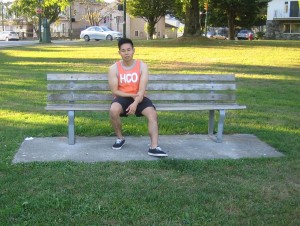De Quervain’s tenosynovitis is a sore condition that involves the tendons found in the side of the thumb. It causes pain when turning the wrist, grasping any object or making a fist. It can also be caused by repetitive movement of the hand and wrist such as playing golf or racket sports, working in a garden and lifting a baby which makes the condition worse.
Symptoms of De Quervain’s tenosynovitis
- Pain in the thumb side of the wrist which can happen gradually or suddenly. Pain in the wrist can spread to the forearm when moving the hand and thumb.
- Swelling on the thumb side of the wrist and cysts filled with fluid.
- Difficulty moving the thumb and wrist due swelling and pain

Pain in the thumb side of the wrist which can happen gradually or suddenly. - Numbness at the back of the thumb and index finger due to the irritated nerve lying on top of the tendon sheath
- A “catching” or “snapping” felt during movement of the thumb
- Pain when there is palpitation of the muscles of the thumb and wrist.
- Swelling near the base of the thumb
Causes
- Direct injury on the wrist or tendon and scar tissue can prevent movement of the tendon
- Rheumatoid arthritis
Treatment
- Take a rest. Avoid performing activities that cause pain until symptoms have totally improved.
- Put a splint on the hand and wrist to prevent unnecessary movement of the affected area and maintain proper alignment.
- Apply an ice pack on the area for at least 15 minutes every 4-6 hours. Avoid placing the pack directly on the skin to prevent further damage and worsen the condition. Wrap the pack with a towel or cloth before placing on the area. Alternate heat using a heating pad. An alternative is taking a warm shower for at least 20-30 minutes at 2 -3 times every day.
- Take the prescribed over-the-counter pain medications such as naproxen and ibuprofen to lessen the pain and inflammation. Corticosteroid injections on the affected tendon sheath can be given to relieve local pain and inflammation.
- Once the pain is reduced, perform hand and wrist rehabilitation exercises with the help of the physical therapist to prevent injuries in the future.
Tips
- Proper warm up before performing any lifting, holding and grasping any object for long periods for proper conditioning of the tendons and prevent strain.
- If certain movements or activities cause pain, find an alternative that accomplishes the same task without causing pain.
- Muscles that are flexible lessen overall tension on the tendons and inflammation of the sheaths that covers them.
